37-year-old female patient, insomnia, headache, mood swings after giving birth, thought to be depression, doctor examined and discovered an 8cm brain tumor.
37-year-old female patient, insomnia, headache, mood swings after giving birth, thought to be depression, doctor examined and discovered an 8cm brain tumor.
The female patient, giving birth for the second time, four months postpartum, came to the clinic with many symptoms of postpartum depression such as irritability, stress, anxiety, insomnia, loss of appetite, fatigue, physical weakness, and shortness of breath when talking.
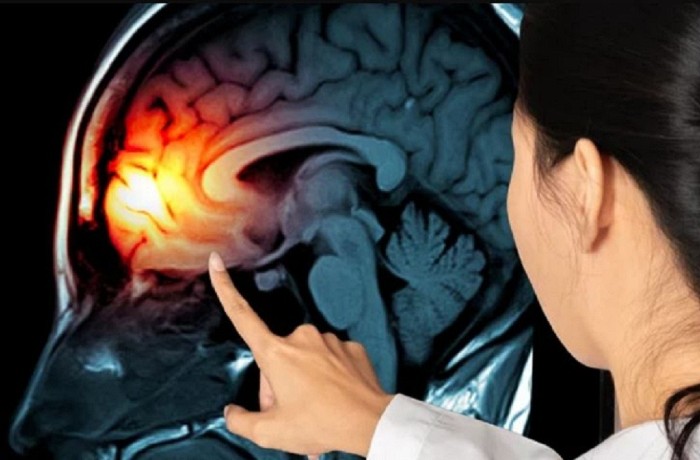 |
| Illustration photo |
Through clinical examination, the doctor discovered that the patient had signs of central nervous system damage, so he ordered a 3 Tesla MRI of the brain for examination. The results revealed a meningioma, the size of an orange, about 8 cm.
Master, Doctor, Specialist II Chu Tan Sy, Head of Neurosurgery Department, Tam Anh General Hospital, Ho Chi Minh City, said that it is highly likely that the patient had this tumor before her second pregnancy.
Meningioma usually develops slowly and silently in the early stages so there are no symptoms. Increased blood circulation during pregnancy causes the tumor to increase rapidly in size, compressing the brain structure, causing symptoms of stress, insomnia, unusual personality changes, and depression.
The tumor is located in the middle third of the sphenoid bone (middle of the skull base, consisting of the body, two large wings, two small wings and the sphenoid process).
This is where important nerve and blood vessel structures such as the carotid artery, optic chiasm, optic nerve and cranial nerves 3, 4, 5, 6 are located. The patient's tumor is large, causing compression and displacement of surrounding nerve structures and healthy brain tissue.
“Removing brain tumors at this location is a big challenge. Any mistake can damage important surrounding structures, leading to neurological dysfunction or even death on the operating table,” said Dr. Tan Sy.
However, the doctor said that if the patient did not have surgery, she would face more severe symptoms, complications such as brain hemorrhage (hemorrhagic stroke), blindness or paralysis on the right side of her body. The doctor advised surgery to remove the tumor, but the patient refused because she was afraid of failure.
The patient then self-treated with folk remedies, combined with Chinese medicine. A month later, the symptoms worsened, accompanied by numbness and weakness on the right side of her body. She returned to the hospital, had a 3 Tesla MRI scan of her brain, and the results were the same as before. She decided to have surgery as directed by the doctor.
The neurosurgery team opened an incision of about 5 cm on the patient's left temple. The K.Zeiss Kinevo 900 microsurgical system with new generation 3D fluorescence imaging function helps the doctor approach and safely remove the tumor. When approaching the tumor, the doctor uses the Cusa ultrasonic suction cutting system to break it down, gradually suck it out, and remove the tumor.
The tumor was compressing the carotid artery and the optic chiasm, so doctors had to carefully dissect the tumor to avoid damaging the carotid artery, causing massive bleeding in the brain, which was very dangerous. And avoid damaging the optic chiasm so the patient would not risk losing vision in the right eye.
After three hours, the team completely removed the “giant” meningioma from Ms. Minh. On the fifth day after surgery, the patient’s health recovered well.
The surgical wound was clean and dry, there were no post-operative complications, and she was discharged and re-examined after a week. The pathology results confirmed that Ms. Minh had a benign meningioma and did not require additional chemotherapy or radiation therapy.
However, patients need to continue taking medication as prescribed to completely treat the symptoms. Physical therapy exercises to increase the effectiveness of muscle recovery on the right side of the body.
According to Dr. Tan Sy, meningiomas develop from the microvilli layer of the arachnoid membrane, accounting for about 34% of tumors of the central nervous system.
Of which, sphenoid wing meningioma accounts for 15-20%. Pregnant women with abnormal symptoms after giving birth should visit a Neurology or Neurosurgery specialist soon for timely diagnosis and treatment, to avoid long-term danger.
Experts say that brain tumors are a common disease in departments such as Neurology, Neurosurgery, Oncology, Radiation Therapy... Each year, 190,000 new primary brain tumor patients are diagnosed and treated in the United States.
More than 688,000 Americans are currently living with brain tumors, of which 130,000 are malignant and 550,000 are benign. Many cancer patients have brain metastases. About 20-40% of all cancers have brain metastases. The same number in Canada is 10,000 patients.
In Vietnam, we do not have official data on brain tumor diagnosis and the rate of brain tumor patients each year. Viet Duc Friendship Hospital alone examines and treats more than 2,500 brain tumor patients each year.
Brain tumors are treatable. Many types of brain tumors are treated early, promptly, and properly, and patients can live, work, and live normally.
There are three main methods of treating brain tumors: surgery, radiotherapy and chemotherapy. Depending on each specific case, the doctor will decide which treatment method is most effective, or sometimes it is necessary to combine several methods together.
Brain tumors in children are different from those in adults. Children generally have a longer survival rate and 69% of children will survive after brain tumor treatment.
The doctor will consider the side effects of the treatment before deciding. Treatments with the fewest side effects will be preferred.
Source: https://baodautu.vn/tuong-tram-cam-sau-sinh-di-kham-phat-hien-u-nao-d230756.html




![[Photo] Prime Minister Pham Minh Chinh chairs the Government's online conference with localities](https://vphoto.vietnam.vn/thumb/1200x675/vietnam/resource/IMAGE/2025/10/5/264793cfb4404c63a701d235ff43e1bd)

![[Photo] Prime Minister Pham Minh Chinh launched a peak emulation campaign to achieve achievements in celebration of the 14th National Party Congress](https://vphoto.vietnam.vn/thumb/1200x675/vietnam/resource/IMAGE/2025/10/5/8869ec5cdbc740f58fbf2ae73f065076)

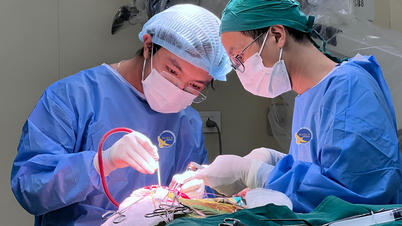

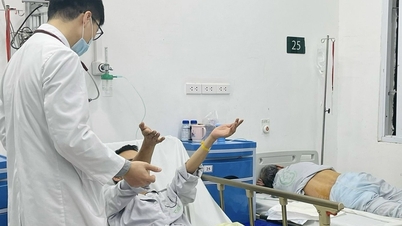


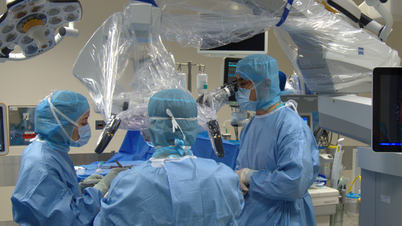
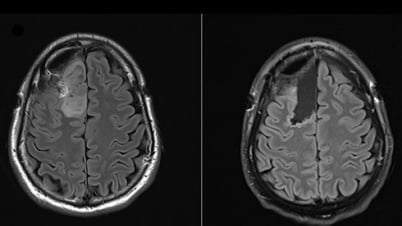



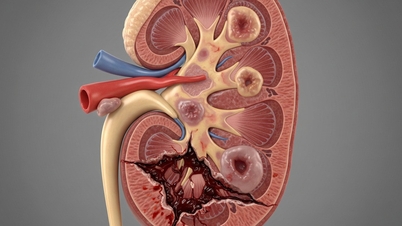

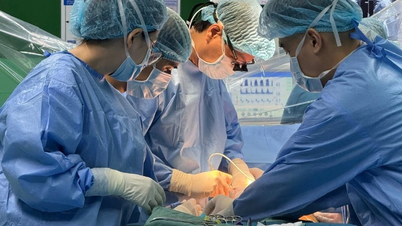

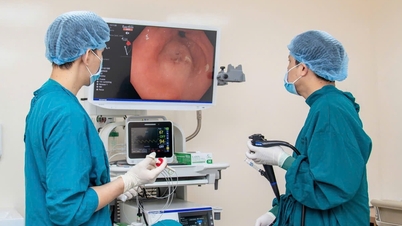
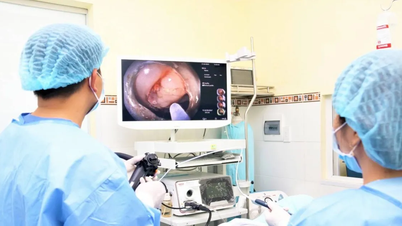



































![[VIDEO] Summary of Petrovietnam's 50th Anniversary Ceremony](https://vphoto.vietnam.vn/thumb/402x226/vietnam/resource/IMAGE/2025/10/4/abe133bdb8114793a16d4fe3e5bd0f12)

![[VIDEO] GENERAL SECRETARY TO LAM AWARDS PETROVIETNAM 8 GOLDEN WORDS: "PIONEER - EXCELLENT - SUSTAINABLE - GLOBAL"](https://vphoto.vietnam.vn/thumb/402x226/vietnam/resource/IMAGE/2025/7/23/c2fdb48863e846cfa9fb8e6ea9cf44e7)



































Comment (0)